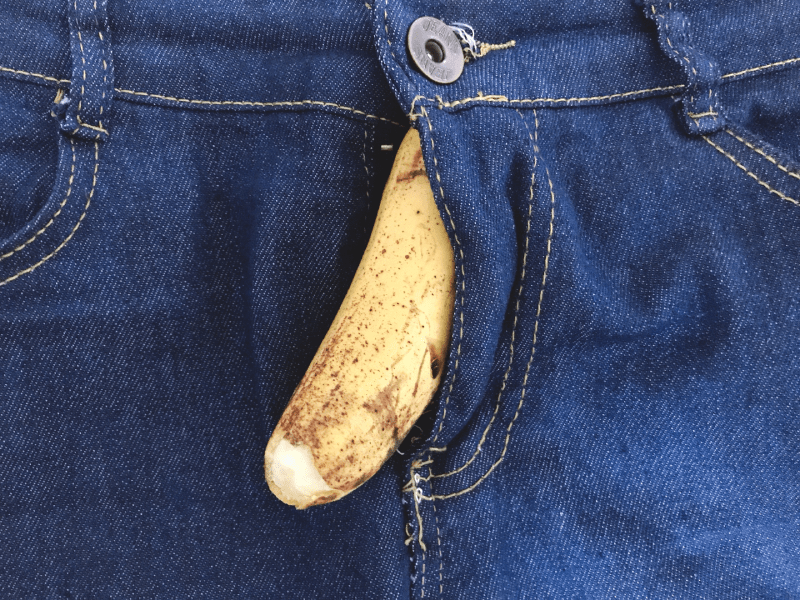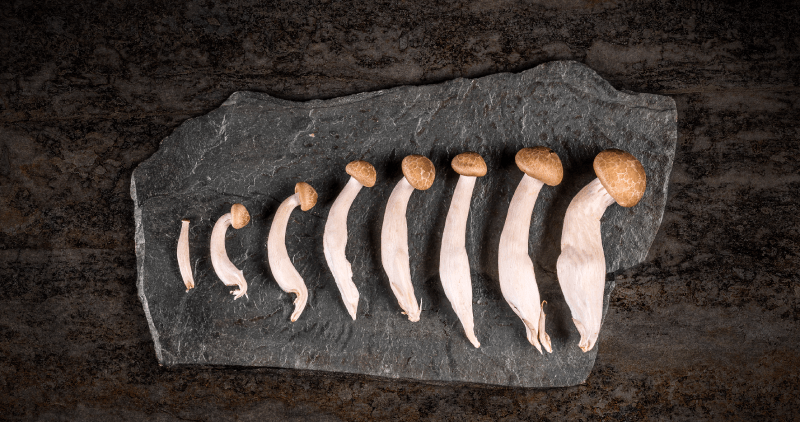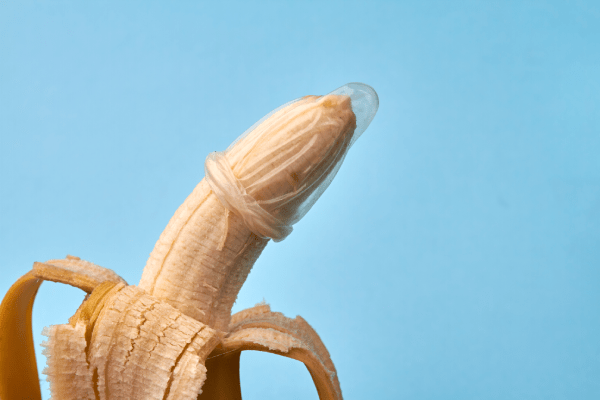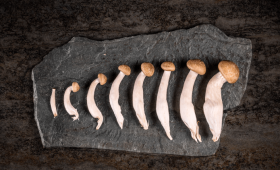What Is Penile Enlargement And How Does It Work?
Penile enlargement, or phalloplasty, is an aesthetic procedure aiming to increase both the length and girth of the penis, typically through surgical or non-surgical methods. The surgical technique usually involves partially cutting the suspensory ligament at the base of the penis, which allows the internally retracted part of the penis to extend outward, thus providing increased flaccid length.
Girth enhancement procedures are mainly achieved by injecting fat tissue harvested from another part of the body or by using special filler materials into the penile shaft. These procedures are individually planned according to the patient’s anatomy and desired outcome. The primary goal of the process is to enhance cosmetic appearance and boost the individual’s self-confidence.
Is Non-Surgical Penile Enlargement Possible?
Yes, non-surgical penile enlargement options are available and are increasingly gaining popularity. The most common non-surgical method involves injecting Hyaluronic Acid based dermal fillers for penile girth enhancement. These fillers offer a relatively short procedure time and fast recovery, but the results are not permanent and require regular top-ups to maintain the effect.
Furthermore, methods such as vacuum devices and special exercises may promise increases in length or girth, but their scientific efficacy and permanence are more limited compared to surgical methods and should be carefully evaluated. Non-surgical solutions generally carry fewer risks and provide more immediate results for thickening the shaft.
What Are The Costs Of Penile Enlargement In The UK?
The cost of penile enlargement procedures in the UK can vary significantly depending on the method used (surgical or filler), the scope of the operation, the type of anesthesia required, and the location of the practice. Prices generally cover not only the procedural fees but also the anesthetist charges, the cost of materials used, and post-operative care expenses. Due to the high cost of living and operational standards, costs in the UK are often higher than in other European countries. Therefore, many individuals explore treatment options abroad to find a combination of cost-effectiveness and high quality service for their needs.
How Long Does The Penile Enlargement Surgery Take?
The duration of penile enlargement surgery varies based on the complexity and number of procedures being performed. When only a length augmentation (ligament cutting) or only a girth enhancement (fat injection/filler) is performed alone, the operation typically lasts between one to two hours. However, comprehensive procedures that combine both length and girth enhancement may extend up to three hours. In addition to the operation time, the patient’s pre-operative preparation and post-operative observation period must also be factored in. Patient safety and comfort are maintained at the highest level during this entire process.
What Is The Post-Operative Recovery Process Like?
The post-operative recovery process usually consists of several stages. Patients are typically discharged within the first 24 hours following the operation. Swelling and mild pain are normal during the first few days and can be managed with prescribed pain medication. Stitches usually dissolve or are removed within two to three weeks. Most patients can return to their normal daily activities and desk jobs within one week. However, it is generally necessary to wait four to six weeks before resuming heavy physical activities, especially sexual activity. The success of the recovery process depends on strict adherence to the provided aftercare instructions.

Is Penile Enlargement A Permanent Solution?
The permanence of penile enlargement procedures varies depending on the method applied. The length increase achieved by cutting the suspensory ligament is considered permanent, as it is an anatomical change. However, the permanence of girth enhancement methods is variable. With fat injection, a portion of the injected fat may be reabsorbed by the body over time; therefore, additional sessions may sometimes be required to maintain a portion of the final result. Dermal fillers are not permanent and generally need to be repeated after 12 to 18 months. Thus, expectations regarding permanence should be discussed in detail when selecting the procedure.
Are There Risks Associated With These Operations?
As with any surgical procedure, penile enlargement operations also carry potential risks and complications. Possible risks include infection, bleeding, scarring, complications related to anesthesia, and risks specific to the method applied. For instance, fat injection carries the risk of lumpiness or uneven fat distribution, while ligament cutting may result in a change in the angle of the penis when flaccid. To minimize these risks, it is highly important to undergo a detailed health check before the operation and have the procedure performed at centers experienced in this field.
Which Age Range Is Suitable For This Surgery?
The generally accepted suitable age range for penile enlargement surgery is usually 18 years and older, as the individual must have completed their physical development. Aesthetic operations of this kind are not recommended for individuals who have not reached adulthood until their sexual development is complete. While there is no strict rule regarding an upper age limit, the general health status and suitability for anesthesia of older individuals must be evaluated in detail. The most important criteria for surgery are physical maturity, realistic expectations of the individual, and psychological readiness for the procedure.
What Methods Are Used For Penile Enlargement?
Penile enlargement is fundamentally performed with different methods for two main purposes: length gain and girth enhancement. For length augmentation, partial cutting of the suspensory ligament is the most common surgical method. For girth enhancement, the most frequently used methods are autologous fat transfer (injection of fat taken from another part of the body) or the injection of dermal fillers (usually hyaluronic acid). Additionally, tissue grafts or biocompatible matrices may also be used in surgical procedures. The most suitable method is determined by the individual’s anatomy, expectations, and the expertise of the center where the procedure will be performed.
How Is The Penile Thickening Procedure Performed?
The penile thickening procedure can be performed independently of or in conjunction with the length augmentation procedure. The essence of this procedure is to circumferentially add volume to the shaft of the penis. It is carried out using the most common method, fat injection (transfer of fat harvested via liposuction), or by using dermal fillers. During fat transfer, fat is first harvested from an area such as the abdomen or thigh using a specialized liposuction technique, purified, and then carefully injected into the sub-dermal tissue of the penis via fine cannulas. This procedure is usually performed under local anesthesia and aims to increase the girth to the desired level while achieving a natural appearance.
What Should Be Considered Before The Surgery?
There are important points that patients should consider before penile enlargement surgery. First and foremost, the patient must be transparent about their medical history and current medication use. Smoking and alcohol consumption should be stopped a certain period before the surgery, as they can negatively affect the healing process. Also, blood thinners, certain vitamins, and herbal supplements should be discontinued a few weeks before the operation. During this process, it is vital to have a comprehensive consultation with the center to clearly understand the operation details and expectations, and to learn about the post-operative care plan.
When Can Sexual Activity Resume After Surgery?
The period for resuming sexual activity after surgery varies depending on the body’s healing rate and the type of procedure performed. As a general rule, it is strongly advised to refrain from sexual activity for at least four to six weeks to ensure complete and safe healing and to minimise the risk of complications. During this period, the aim is to avoid straining the penis, to allow the swelling to fully subside, and for the incision sites to heal. Definitive clearance on when sexual activity can safely resume should be given by the consulted specialist during regular check-ups following the operation.
How Soon Will The Results Start To Show?
The results of the penile enlargement procedure appear at different rates depending on the method applied. In thickening procedures performed with dermal fillers, results are visible immediately, although the final appearance is not yet clear due to swelling in the first few days. In surgical methods, especially in length augmentation (ligament cutting) surgery, although results are immediately observed, the final shape and size may take three to six months to emerge as the significant initial swelling and edema completely subside. It is important to be patient during this period and adhere to the guidelines for reducing swelling.
Is The Penile Enlargement Procedure Safe?
The safety of the penile enlargement procedure largely depends on the correct selection of the procedure, the experience of the practitioner, and the quality of post-operative care. Generally, standard surgical procedures and dermal filler applications are considered safe when performed correctly under sterile conditions and by competent individuals. However, as with any medical intervention, risks of infection, bleeding, and anesthesia are present. To enhance safety, the patient’s medical history must be examined in detail, and risks should be minimised. This is a priority practice for ethical and professional centers.
Is Pain Experienced During The Treatment Process?
During the surgery, general or local anesthesia is administered to ensure patient comfort, so no pain is felt during the procedure itself. Post-operatively, mild to moderate pain and tenderness are expected in and around the incision sites. This pain is usually easily managed using standard pain relief medications provided by prescription. The pain generally subsides and disappears within the first few days. Swelling and bruising may last longer than the pain. The vast majority of patients are satisfied with the pain management and find the process comfortable.
What Are The Treatment Options Outside The UK?
For individuals residing in the UK, treatment options abroad have become quite popular. Many people prefer destinations such as Turkey and other European countries to find centers that offer more affordable costs, shorter waiting times, and services of high standards. These international options can offer advantageous packages that include travel, accommodation, and surgical expenses combined. The balance of price and quality, language support, and organized medical travel possibilities play an important role in the choice of treatment abroad.
In Which Cases Is Surgery Not Recommended?
Penile enlargement surgery may not be suitable for every individual, and the procedure is not recommended in some cases. The primary reasons for refusal include: the individual having unrealistic expectations about the size increase, the presence of psychological conditions like body dysmorphic disorder (BDD), or anatomical issues that cannot be resolved through surgery. Furthermore, chronic medical conditions that could pose a risk to general health, such as uncontrolled diabetes or severe heart or lung diseases, also pose risks for the operation. Individuals who must continuously use blood-thinning medications should also undergo careful evaluation before surgery.
How Is The Fat Injection Method Applied?
The fat injection method is a popular technique for penile thickening. The procedure begins with harvesting fat from an area of the patient’s body, such as the abdomen, thigh, or buttocks, using a specialized liposuction technique. The harvested fat is then processed in a centrifuge to separate pure, viable fat cells. This purified fat is carefully and evenly injected into the sub-dermal tissue of the entire penile shaft using fine cannulas. The goal is to increase the circumferential girth of the penis while ensuring a natural contour. Fat injection is usually performed under regional anesthesia or sedation, and the viability rate of the fat affects the final result.

Does The Ligament Cutting Method Provide A Permanent Effect?
The method of partially cutting the suspensory ligament, applied to increase the length of the penis, is a surgical intervention that makes the achieved lengthening permanent. This ligament is the structure that connects the penis to the pubic bone and causes a portion of the penis to remain inside the body. Controlled cutting of the ligament allows a certain amount of the internal part of the penis to extend outwards, providing greater length in the flaccid position. However, this procedure does not significantly affect the length during erection, and special stretching devices may be required post-operatively to maintain the gained length.
Does Penile Enlargement Provide Psychological Benefits?
Beyond providing a physical change, penile enlargement procedures can offer significant psychological benefits to many patients. In individuals experiencing body image anxiety, lack of self-confidence, or performance worries, an improved appearance after a successful operation can positively influence the person’s self-belief and sexual self-perception. Before deciding on such a procedure, psychological counselling is recommended to ensure that expectations are grounded in reality; this helps align the physical change with mental well-being.
Will There Be Scars After The Procedure?
In surgical penile enlargement procedures, minimal scarring is possible, but these scars are generally quite small and become difficult to notice over time. In length augmentation surgeries, the incision is usually made in the groin area, just above the pubic bone, and this area can be easily concealed by natural folds or pubic hair. For girth enhancement using fat injection, only very small cannula entry points remain at the sites where the fat was harvested and injected. The center carefully selects suture techniques and incision locations to minimize aesthetic concerns.
Are The Dermal Fillers Used Safe?
The safety of dermal fillers used for penile thickening depends on the type and quality of the substance used. Hyaluronic acid-based fillers, which are generally preferred, are considered biocompatible as they are a substance naturally found in the body, and the risk of allergic reactions is low. These fillers are approved medical products and are safe when applied using the correct technique. However, unapproved or permanent fillers should be strictly avoided, as they can lead to serious complications. A quality center is always committed to using reliable and approved materials.
What Is The Length Gain Achieved After Surgery?
The length gain achieved through surgery varies from person to person depending on the patient’s anatomy and the length of the suspensory ligament. By partially cutting the suspensory ligament, the goal is generally to achieve an increase of between 2 to 5 centimeters in the flaccid (hanging) position. It should be noted that this increase usually has very little effect on the length during erection. For a successful outcome, adherence to post-operative stretching protocols, in addition to the surgical procedure, is critically important. The consulted center will share personalized estimated results before the surgery.
How Are Post-Operative Check-Ups Performed?
Post-operative check-ups are vital for closely monitoring the healing process and for early detection of potential complications. The first check-up is usually scheduled within the first week after the surgery to evaluate the condition of the stitches and the level of swelling. Subsequent check-ups are generally planned around the first month, third month, and sixth month, depending on the individual’s healing rate. During these checks, the patient shares their progress in the recovery process, and the specialist provides the necessary clearance regarding the resumption of sexual activity or heavy activities like sports.
What Might Be The Reasons For Treatment Refusal?
Centers reserve the right to refuse the penile enlargement treatment request of some applicants for ethical and medical reasons. The most common reasons for refusal include: unrealistic size expectations, the individual not being physically fit for the operation (high-risk health conditions), exhibiting signs of body dysmorphic disorder (BDD), or not fully understanding the risks of the procedure. A professional approach is maintained, always prioritizing patient safety, knowing that the procedure primarily serves aesthetic concerns and is not a medical necessity.
What Tests Are Required Before The Operation?
A series of medical tests are mandatory before penile enlargement surgery to evaluate the patient’s general health status and determine the anesthesia risk. These tests typically include a standard surgical evaluation protocol: complete blood count (CBC), biochemistry panel, coagulation (blood clotting) tests, hepatitis, and HIV tests. Additionally, an electrocardiogram (ECG) may be requested to assess heart health and a chest X-ray to check lung status. These tests are essential for ensuring the operation is performed as safely as possible.
Does The Penile Enlargement Procedure Affect Erection?
The primary goal of penile enlargement procedures is not to adversely affect erection quality or function. Length augmentation surgery (ligament cutting) usually has very little impact on length during erection. Thickening procedures (fat or filler) do not directly affect the erection mechanism as they are applied to the external tissues of the penis. However, as with any surgical intervention, temporary changes in sexual function may occur during the initial recovery period due to temporary swelling or bruising. What is important is the correct application of the surgical technique to prevent complications.
How To Choose The Right Center For The Procedure?
Choosing the right center for the penile enlargement procedure is critical for a successful outcome and a safe experience. Factors to consider when making a selection include: the center’s experience and expertise in such specific procedures, the modernity of the techniques used, the high hygiene standards, and the follow-up and care services they offer post-surgery. Furthermore, the transparency and supportive nature of communication with patients before and after treatment should also be evaluated. The best results are achieved in centers focused not only on expertise but also on an ethical approach.
Is General Anesthesia Used During The Surgery?
Anesthesia selection in penile enlargement surgeries depends on the scope and duration of the procedure to be performed, as well as the patient’s preferences. Simple thickening procedures (filler or small fat transfer) can usually be easily performed under local anesthesia and sedation. However, general anesthesia or spinal anesthesia may be preferred for more comprehensive and longer surgical procedures, such as cutting the suspensory ligament. The anesthetist will recommend the safest and most comfortable anesthesia method after evaluating the patient’s medical history.
Can Long-Term Results Be Guaranteed?
In no medical or aesthetic procedure can results be one hundred percent guaranteed, as the body’s individual response and healing process vary from person to person. While the anatomical change achieved in length augmentation is permanent, some of the thickness gained through fat injection may be absorbed by the body over time. The expertise of the center aims to use the most advanced techniques to achieve the best and longest-lasting results. It is important for patients to adhere to post-operative care instructions to maintain the results and be open to supplemental procedures, such as filler refreshers, if necessary.
Are There Alternative Methods For Thickening?
Besides surgical fat injection and hyaluronic acid dermal fillers, other alternative methods used for penile thickening include tissue matrices (tissue grafts) and biocompatible synthetic materials. Tissue matrices are typically tissue engineering products that are placed around the penis and aim to provide natural thickening by being colonized by the patient’s own cells over time. These methods may be offered as an option for patients seeking a more permanent solution and who are not suitable candidates for fat transfer. Each alternative has its own unique advantages and disadvantages.

Might Revision Surgeries Be Necessary?
Rarely, revision (corrective) surgeries may be necessary after penile enlargement operations. The need for revision usually arises due to dissatisfaction with the results of the initial operation (e.g., asymmetrical or lumpy fat distribution), significant fat reabsorption, or an unwanted change in the angle of the penis after ligament cutting. For a successful revision, it is important to contact the center that performed the initial procedure or another center with high experience. These situations are evaluated in detail by professional centers, and a corrective plan is provided to the patient.
Can Sports Be Played During The Recovery Period?
Avoiding sports and heavy physical activities during the recovery period is mandatory for the success of the operation and the prevention of complications. Generally, any strenuous exercise other than light walking should be avoided for the first two weeks. Heavy sports such as running, weightlifting, or cycling that could cause stretching, swinging, or direct contact with the penis are usually permitted after four to six weeks. Before starting sports, a consultation with the specialist should be made to ensure that the incision sites are fully healed and the swelling has significantly reduced.
What Should Be Considered After The Treatment?
To ensure a successful and rapid recovery after penile enlargement treatment, there are a series of important instructions that patients must adhere to. These instructions include keeping the incision area clean and dry, regular use of prescribed antibiotics and pain relievers, wearing loose and comfortable clothing in the first few days, and using recommended compression garments to reduce swelling. Furthermore, performing special massage or stretching exercises recommended by the specialist can help optimize the final result. Avoiding smoking and alcohol also accelerates healing.
Why Is Treatment Abroad Preferred Over The UK?
High costs, long waiting lists, and sometimes accessibility challenges in the UK lead many individuals to turn to treatment options abroad for aesthetic procedures like penile enlargement. Experienced centers abroad typically offer high-quality services and modern facilities at more competitive prices. In countries like Turkey, patients can receive a more comprehensive and affordable experience with packages that cover the operation, accommodation, and transfers. This is an advantageous way to access top-tier expertise while managing the budget effectively.



